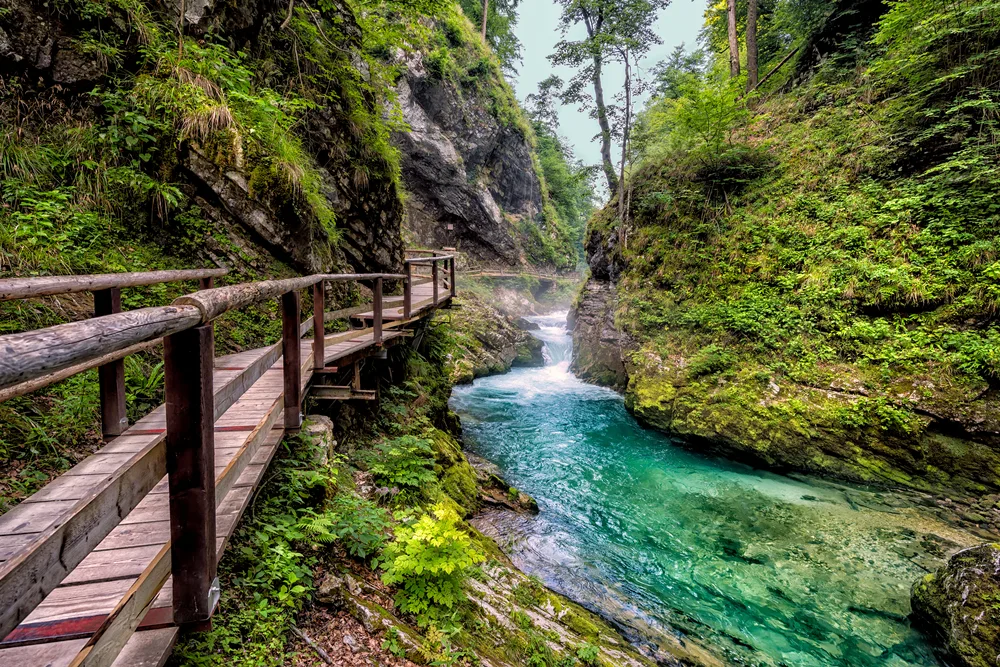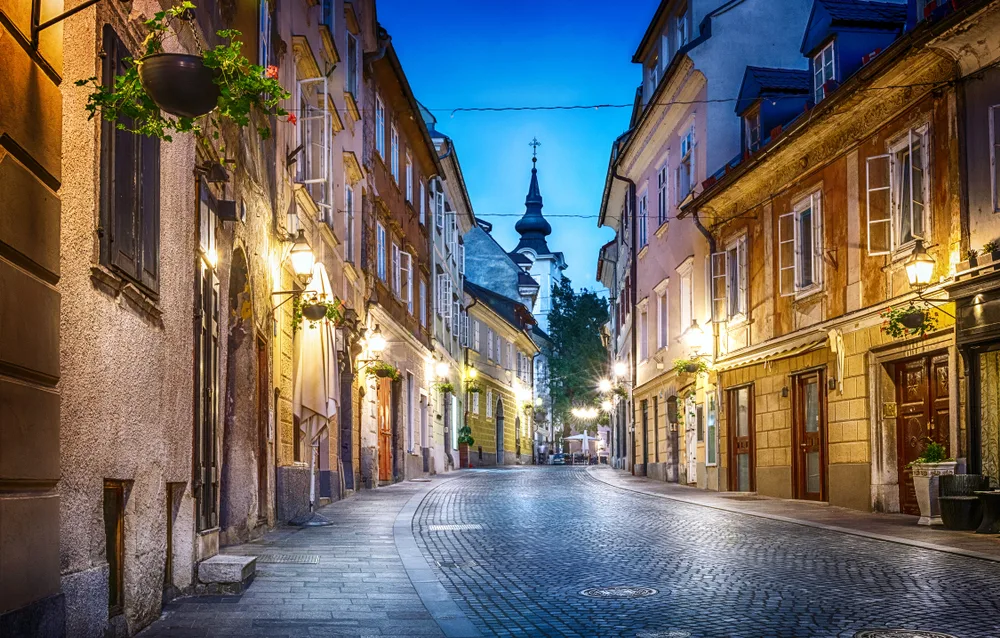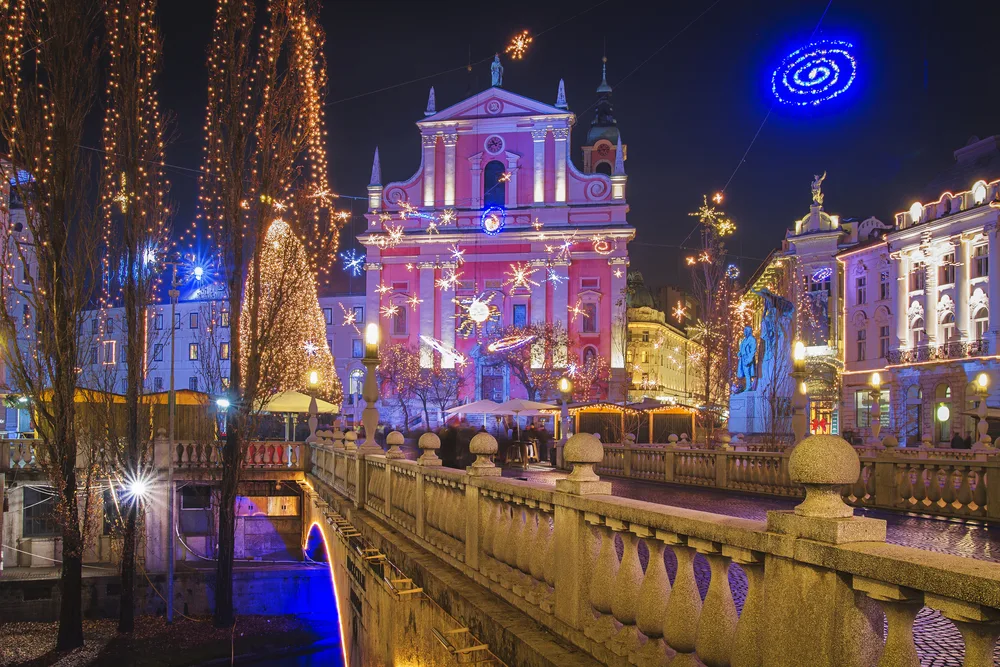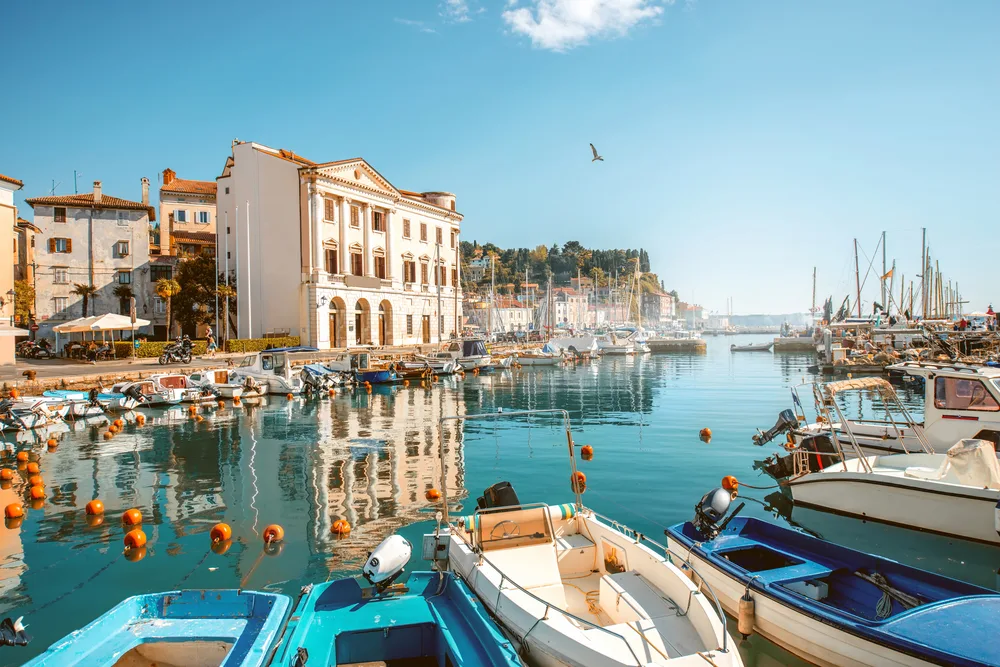What's the best time to visit Slovenia?
The best time to visit Slovenia is from May to October, when the weather supports everything from kayaking to hiking. The Adriatic Coast heats up in summer, drawing crowds for swimming and vibrant activities, though prices peak with the tourist influx. Come September, cooler temperatures and fewer visitors make for a more peaceful yet equally enjoyable experience.
Planning a Slovenian getaway? We’ll show you the best times to visit this European jewel to make the most of your trip. Whether you crave summer vibes, fall’s vibrant hues, or winter’s serene charm, we’ve got you covered.
The Best Time to Visit Slovenia

Jana Vackova-Vesela/Shutterstock
The best time to visit Slovenia is between May and October. The weather is cool but warm enough to do pretty much any outdoor activity. Late spring is when Slovenia awakens from its winter sleep, and the first warm sun allows for outdoor activities such as kayaking, hiking, and biking.
Some people are even “brave enough” to swim in the local rivers, like Soča. In May, the temperature gets as high as 73°F. That said, the nights are still quite chilly.
During summer, the Adriatic Coast is lively and dynamic, and the temperatures reach over 80°F. Because this is the ideal time to visit Slovenia, it’s also when you may see higher prices on accommodation, flights, car rentals, and other activities.
The water is perfect for taking a swim, there are (almost) no rainy days, which Slovenia is so (in)famous for, and the whole country is “buzzing” with energy. Also, summer is when the forest trails are the greenest — this is a useful piece of information for all of you nature lovers out there.
In September, the whole season seems to be nearing its end. It gets less crowded and temperatures start to drop (they can get as low as 57°F), which is why prices drop too.
This beginning of autumn and the end of the summer is perfect in the sense that the shore is much more peaceful, but the warm days are still hanging on. Whichever month you choose between May and October, you won’t regret it!
Cheapest Time to Visit Slovenia

Littleaom/Shutterstock
The cheapest time to visit Slovenia is in spring, during the April–May period, and then in autumn, during the September–October period. You can visit many of the must-see attractions, such as the Predjama Castle, for a lower price, and the same applies to accommodation and flight costs.
April and May is when everybody prepares for the upcoming summer season, so the prices aren’t as high as during the peak season.
The same goes for September and October — it’s the end of the summer season and the beginning of the school year, so even families in Slovenia put a stop to their weekend trips within the country.
During this limbo period, the country prepares for its winter tourists starting from November/December onward. The weather is also ideal for travelers who don’t like extreme temperatures.
For instance, if you go in April or May, you’ll manage to skip not only the summer crowds but potentially hotter days. And going in September or October means more or less stable weather, as winter is yet to begin — the temperatures still allow people to enjoy themselves and do many activities.
In May, there’s the Vinska vigred Wine Festival in Metlika and the Druga Godba International World Music Festival in Ljubljana.
In October, you can run the Ljubljana Marathon or go to Maribor and attend the oldest Vine Grape Harvest. This is also the best time to be in nature, as all mountains and hills are colored in yellowish, reddish, and orange hues. Perfect for an Insta-worthy photo!
Just because this is the cheapest time to visit Slovenia doesn’t necessarily mean there’s nothing going on or you don’t get to spend your money on anything. It simply means that everything is much more down-to-earth and less chaotic because it’s not the official tourist season.
All in all, these two periods are great for travelers who want to experience Slovenia and attend some interesting events without getting caught up in large crowds or paying higher prices for attractions, accommodation, and flights.
Least Busy Time to Visit Slovenia

Triff/Shutterstock
The least busy time to visit Slovenia is during the shoulder season, which in Slovenia happens in the months of April and November.
In April, the temperatures range from 46°F to 65°F; in November, they’re between 44°F and 58°F. In general, these two months allow travelers to experience an uncrowded Ljubljana, fewer queues when visiting Slovenian attractions, more accommodation choices, and cheaper flights.
Apart from the buzz surrounding Easter in April, these two months typically see very few tourists and events. That said, in April, there’s the International Elvis Festival in Portorož and the St. George’s Day Folklore Festival in Črnomelj.
On November 11, a key event that takes place is St. Martin’s Day, and as a result, there are numerous celebrations across the county.
The celebrations don’t just take place on the day — St. Martin’s Day is usually celebrated for a whole week (or two!) after that. To truly celebrate it, however, you need to visit winemakers and vineyards, and of course, try different wines, as this month is all about wine appreciation.
There are also some dishes typical for the holiday, such as roast goose and stewed red cabbage, worth trying out.
Most restaurants even provide guests with St. Martin’s Day menus, so experiencing that is another must if you decide to go in November. Finally, if you want to see Lake Bohinj and Lake Bled, this is the period to do so.
In summer, both get extremely crowded (especially during weekends), and in winter, it can get really cold, so you won’t be able to enjoy them if you aren’t fond of large crowds or cold weather.
Worst Time to Visit Slovenia

Tomas Kulaja/Shutterstock
The worst time to visit Slovenia is from December to March. It’s cold, it’s rainy, and most tour operators decide to take the season off.
Moreover, there aren’t that many tourists in general. In December, the temperature can get as low as 36°F (the highest is 51°F). In March, the minimum temperature increases to 39°F, and the highest to 57°F.
There are very few sunny days; in Ljubljana, for instance, there may be none during the whole of March. Also, certain attractions in smaller towns may have limited working hours, while some may be closed during the entire season.
That said, going to Slovenia in winter has its perks for people who wish to enjoy the snowy landscape, visit the slopes, or go to a wellness and spa center.
And even if you don’t ski or if spa centers aren’t your thing, you can always attend the Christmas market in Ljubljana (which is quite lively and charming, by the way).
Alternatively, you can move toward the coast where the winter temperatures are much more bearable.
Finally, many believe this should be the cheapest period to visit Slovenia, as nothing special seems to be happening then. However, due to the popularity of spa and wellness centers, as well as winter activities, don’t expect to find affordable accommodation.
So, What’s the Best Time to Visit Slovenia?

RossHelen/Shutterstock
The best time to visit Slovenia depends on what you’re hoping to get out of the trip, but overall, most travelers prefer going there anytime between May and October.
This is so because it’s the peak season, the days are warmer, and there’s a lot going on in the country — from seaside activities to city events.
Considering Slovenia’s diverse climate, you’re more than likely to enjoy your time there regardless of when you decide to visit. So what are you waiting for — book your trip to Slovenia today!



